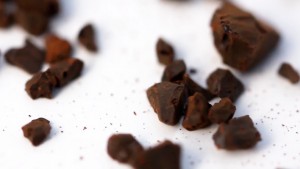
Granular ferric oxide, or GFO, is a widely used form of chemical filtration in the reef-keeping hobby today. Chemical filtration, as the name suggests, purifies water by binding up impurities at the molecular level. As water is sent through the medium, the surface of the medium forms chemical bonds with dissolved compounds, thus removing them from the water. Different chemical filtration media target different compounds. The goal of GFO, specifically, is to help control phosphate.
Why phosphate?
First, phosphate contributes to nuisance algae growth in the aquarium that could spiral out of control if not managed swiftly. Everything on a reef is trying to compete for space and resources. Algae, in many respects, do a better job of competing than our corals do. By limiting phosphate availability in the water column, it slows or stops the growth of algae and thus helps the corals in that struggle for space and resources.
Second, an abundance of phosphate directly inhibits stony coral growth. If you have phosphate in high enough concentrations, it interferes with the corals’ ability to build new skeleton. This can leave coral colonies weak and susceptible to infection or overgrowth from encroaching algae. Some stony corals are more sensitive to phosphate than others, but in the end, a copious amount of phosphate in the water is a suboptimal condition for our reefs.
GFO dosage is important
GFO helps manage phosphate by binding it up chemically, thus effectively neutralizing it. Unlike other chemical filtration media, such as activated carbon, there is such a thing as too much of a good thing when it comes to GFO. Ferric oxide is basically rust. It does not only target phosphate. GFO can and will lower trace elements that contribute to stable water chemistry. For this reason, we strongly recommend following the directions on how much to use for your tank’s volume.
If you happen to overdose GFO in your reef tank, your corals might look like they are a little burned out and start bleaching. If this happens, we recommend removing the GFO and doing water changes until the situation improves.

Advanced Reef Aquarium carries two varieties of GFO, a regular-capacity and a high-capacity. The high-capacity lasts significantly longer than the regular-capacity, so if your tank is experiencing long-term high phosphate, it may be cost-effective in the long run to use the high-capacity medium.
Once you’ve decided on the type of medium to use, the best way to implement GFO is through a recirculating reactor. GFO works best when it is lightly tumbled. A reactor is a very simple device that sends water through the medium by way of a diffuser plate at the bottom. The water flow through this diffuser plate keeps the medium in a light suspension and prevents clumping. A sponge at the top of the unit prevents the fines from re-entering your reef tank.
Last word on GFO
In closing, if your reef tank is struggling with nuisance algae, it may be a good time to grab a test kit and see if you have elevated phosphate levels. The readings should be close to undetectable. Trace amounts of phosphate are necessary for coral health, but we are talking about “trace” amounts, not quantities that readily show up on a test kit. If you do happen to have phosphate, regular water changes will help, but consider adding some GFO as well to speed the process along.



